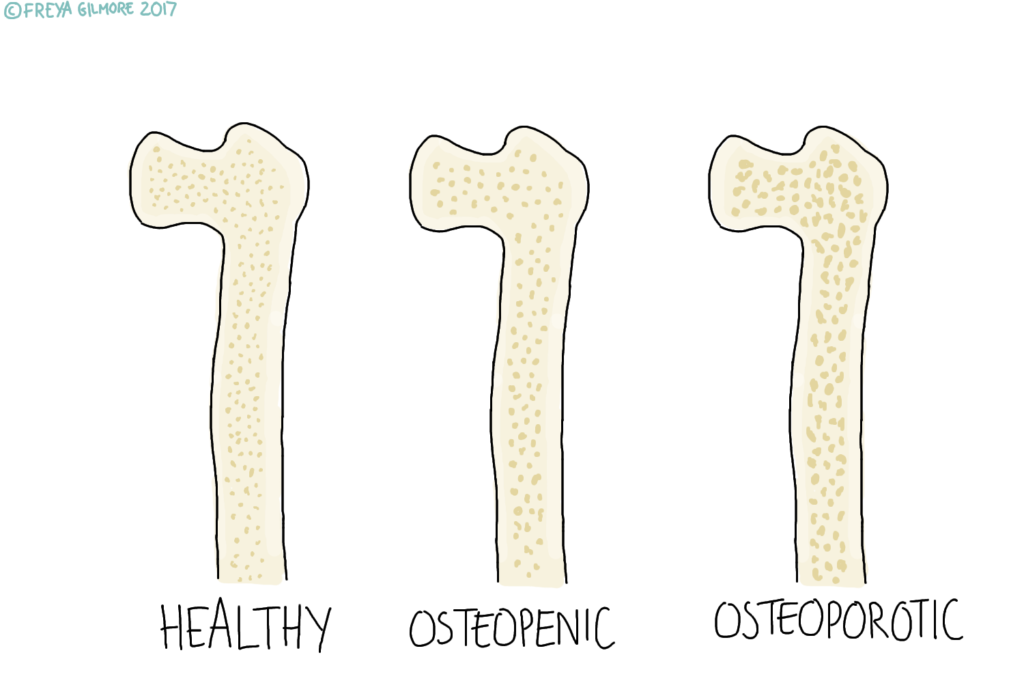Osteoporosis is a diagnosis of reduced bone density, meaning you have a higher likelihood of breaking bones. This happens when the usual process of the body breaking down old bone overtakes the speed of rebuilding. Bones are not completely solid- they’re full of tiny holes. But when density reduces, the holes grow bigger. It’s more common in women than men, and is associated with a drop in oestrogen, such as menopause or the use of some medications. Becoming less active and being low in vitamin D are also risk factors.

Diagnosing Osteoporosis
You may not know you have it until you break a bone. 50% of women, and 20% of men over 50 suffer a fracture due to low bone density, so following a fracture, it’s not unusual for your doctor to order a measure of bone density.
A DEXA scan is a specialist X-Ray that looks at a few bones in particular to identify their density. The hip and wrist are commonly used as test points. If the figure that this information produces comes back lower than -2.5, it qualifies as osteoporotic.
Osteopenia
When the figure from the bone density scan sits between -1 and -2.5, a diagnosis of osteopenia is appropriate. This means that your density is lower than average, but not so low that you can be diagnosed with osteoporosis. Your doctor may or may not want to prescribe medication at this point.
Managing Osteoporosis
You will likely be offered medications to support your bone density. These might be supplements, like vitamin D or calcium, or they might be bisphosphates. Dietary advice for increasing your intake of calcium (the building blocks) and vitamin D (that enables your body to absorb calcium) can be helpful too.
Lifestyle changes can have a huge impact on your bone density too. The following will have a negative effect:
- smoking
- drinking alcohol
- maintaining a low body weight
Some other health conditions negatively impact bone density, such as:
- rheumatoid arthritis
- hyperthyroidism
- coeliac or Crohn’s disease
If you suffer from any of these, try to make a special effort to keep your load bearing exercise, vitamin D, and calcium intake up.
Your Osteopath’s Role
You can also encourage your body to lay down more bone by introducing weightbearing exercise into your routine. Your osteopath can support you here, but general advice is to start gently and build up to higher loads. That might mean starting out with just walking before building up to something stronger. It doesn’t necessarily mean you’ll need a gym membership: body weight exercise and small hand weights alone will make a difference.
Beverley can provide a tailored exercise plan and review it with you as needed. She can also support you with any aches and pains that might currently limit your movement. If an ankle fracture in your history has affected your gait or confidence, rehabilitation here might be needed to get you back to exercise and avoid another injury. The first step is often the hardest, and we hope that with a little support, we can get you back to activity again.
Click here to make an appointment with Beverley in Umm Suquiem, Dubai
